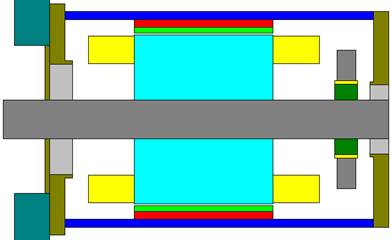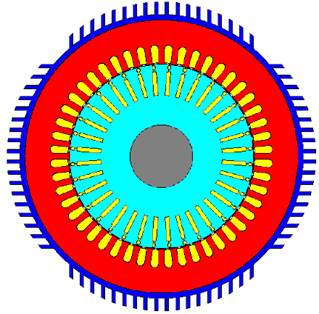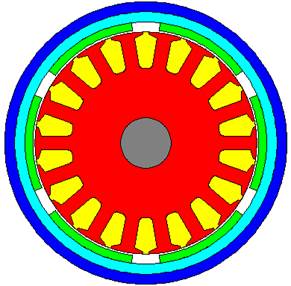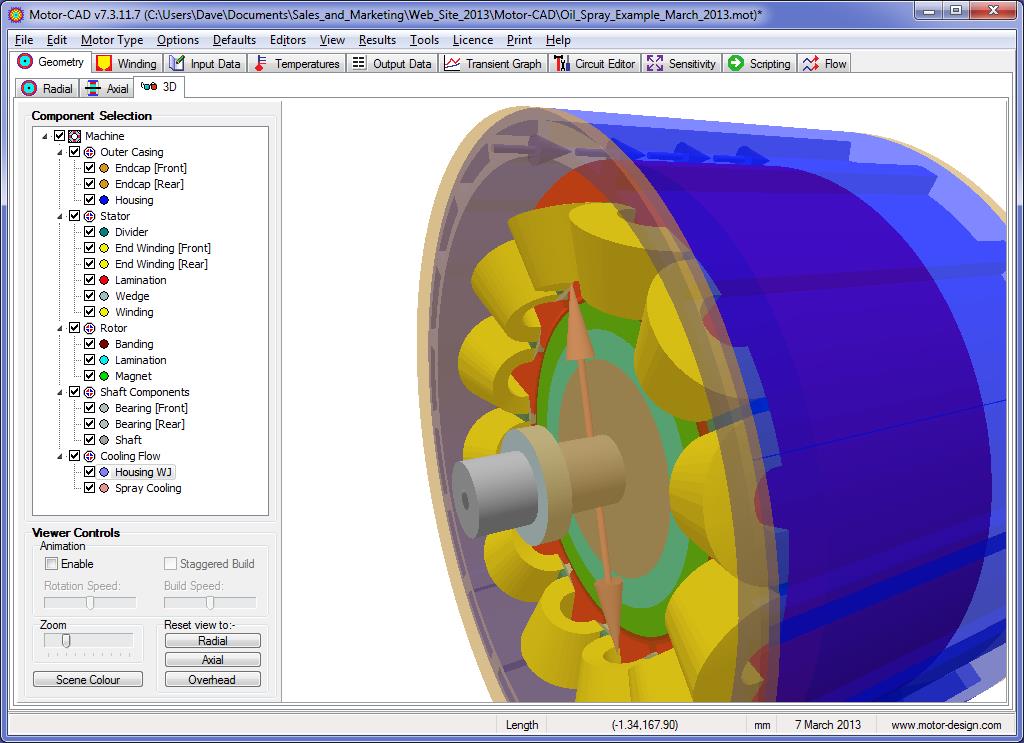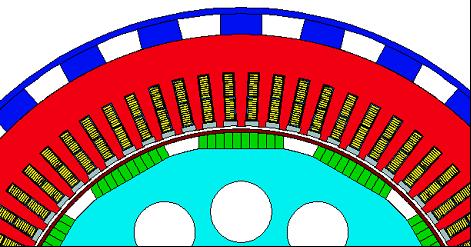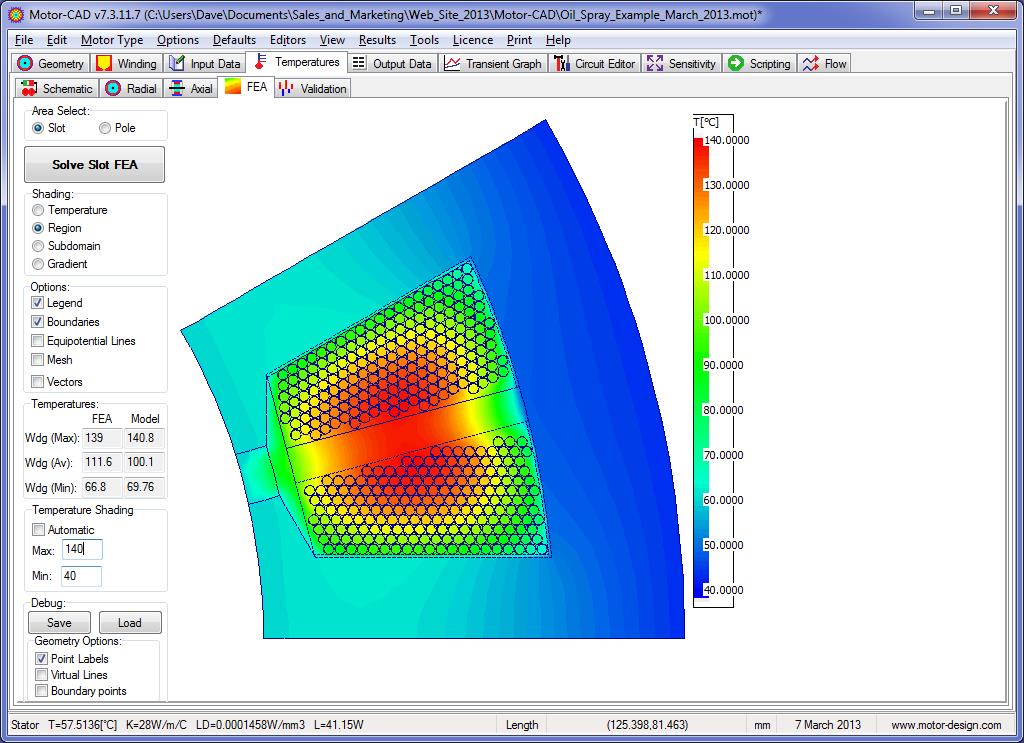Motor-CAD

Motor-CAD is a unique software package for the electromagnetic and thermal analysis of electric motors and generators.
It is used by many leading motor manufacturers and universities world wide to optimise the cooling of a wide variety of motor types and cooling methods.
The software is used to provide rapid analysis of design and manufacturing changes. Its analytical based algorithms give instantaneous calculation speeds and allow ‘what-if’ analysis in real time. The fast calculation speeds are a real plus for modelling of complex duty cycles such as traction motor drive cycles and application such as elevator load cycles.
The software has a highly developed user interface that makes for easy data input and interpretation of results.
- brushless permanent magnet motors (BPM),
- outer rotor BPM motors,
- induction motors,
- permanent magnet dc machines,
- switched reluctance motors,
- synchronous machines,
- claw pole machines,
- universal motor.
Motor-CAD electromagnetics modules are available for the following motor types:
- brushless permanent magnet motors (BPM),
- induction motors.
Motor-CAD thermal models are available for the following cooling methods:
- natural convection (TENV),
- forced convection (TEFC),
- through ventilation,
- water jackets (several configurations),
- submersible,
- wet rotor and wet stator,
- spray cooling,
- radiation,
- conduction.
Additionally the user may include in the model various mounting configurations that can heat up or provide extra cooling to the machine.
